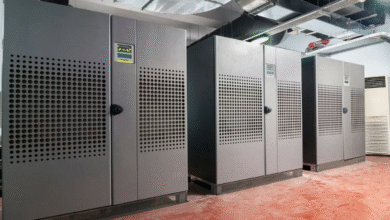Precision Under Pressure: The Weight of Industrial Automation

The automatic weighing and filling machine hums with mechanical precision in factories across the globe, marking the heartbeat of modern manufacturing. In pharmaceutical plants and food production facilities, these industrial sentinels guard over quality and consistency, measuring and dispensing products with accuracy that human hands could never achieve. Yet beneath their operation lies a complex web of engineering innovation, regulatory compliance, and economic necessity that touches every consumer product.
The Architecture of Precision
Inside a contemporary automatic weighing and filling facility, measurement and automation unfold with balletic precision. These systems represent decades of engineering evolution, where mechanical components work with electronic sensors to achieve tolerances measured in fractions of grams. Modern weighing and filling apparatus operates within parameters so exacting that 0.1% deviations trigger immediate corrective action.
The technology integrates load cells that translate weight into electrical signals, whilst programmable controllers orchestrate filling sequences with split-second timing. The result is manufacturing capability processing thousands of containers hourly whilst maintaining consistency manual operations could never approach.
Regulatory Frameworks and Compliance Imperatives
Singapore’s approach to weighing and measuring equipment regulation provides insight into the stringent requirements governing automatic filling systems. According to Singapore’s Weights and Measures framework, “all new or repaired weighing or measuring instruments can only be used for trade purposes after they have been verified, approved and stamped by The WMO or an Authorised Verifier.” This regulatory oversight ensures that every automatic weighing system meets exacting standards before entering commercial service.
The implications extend beyond mere compliance. In pharmaceutical manufacturing, where dosage accuracy can determine treatment efficacy, regulatory authorities demand documentation proving that each weighing and filling cycle meets predetermined specifications. The consequences of non-compliance include:
• Product recalls that can cost millions in lost revenue and damaged reputation
• Regulatory sanctions resulting in production shutdowns and legal penalties
• Insurance implications where coverage depends on demonstrated compliance
• Market access restrictions in jurisdictions with strict import requirements
The Human Stories Behind Industrial Automation
In facilities employing automatic weighing and filling technology, workers’ roles have evolved dramatically. Technicians monitor digital displays, interpreting data streams that reveal system health at speeds impossible for human observation. Their expertise lies in understanding subtle variations that indicate optimal performance versus impending malfunction.
Training programmes reflect the complexity of modern weighing and filling systems, requiring workers to master statistical process control, materials science, and analytical troubleshooting rather than physical labour.
See also: DAMAC Majestine: Elevate Your Lifestyle in Dubai
Economic Realities in Global Manufacturing
The economic calculations surrounding automatic weighing and filling equipment reveal the harsh mathematics of competitive manufacturing. Initial capital investments often exceed hundreds of thousands of pounds, yet the productivity gains justify these expenditures within months rather than years.
Consider the pharmaceutical industry, where manual filling operations might process 100 containers per hour with accuracy rates of 95%. An equivalent automatic weighing and filling system processes 2,000 containers hourly with accuracy exceeding 99.5%. The labour savings alone justify investment costs, whilst the reduced error rates prevent costly product wastage and regulatory complications.
The food processing sector faces similar economic pressures, where consumer expectations for consistent portion sizes demand precision impossible through manual processes. Automatic weighing systems ensure that each package contains exactly the declared quantity whilst minimising overages that erode profit margins.
Technical Evolution and Innovation Drivers
Contemporary automatic Weighing and Filling machinery incorporates technologies that previous generations of engineers could scarcely imagine:
• Multi-head weighing systems that combine individual measurements for optimal accuracy
• Vision-guided positioning ensuring precise container alignment during filling cycles
• Real-time statistical monitoring that identifies trends before they impact quality
• Network connectivity enabling remote diagnostics and predictive maintenance
• Adaptive algorithms that automatically adjust parameters based on product characteristics
These innovations reflect responses to mounting competitive pressures and regulatory requirements that demand ever-greater precision and reliability from manufacturing equipment.
Industry Applications and Sector Adaptations
The pharmaceutical industry exemplifies automatic weighing and filling precision in vaccine production facilities, where systems operate within cleanroom environments. Each filling cycle must deliver exact dosages whilst maintaining sterile conditions.
Food manufacturing presents different challenges, where automatic weighing systems accommodate products from free-flowing granules to viscous pastes. Chemical processing relies on these systems for applications where measurement errors could compromise safety, requiring equipment that handles corrosive materials whilst maintaining accuracy.
Challenges in Implementation and Operation
The complexity of automatic weighing and filling systems extends beyond technical specifications into operational realities. Integration with existing production lines requires careful planning and substantial modifications. Learning curves demand comprehensive training programmes spanning months, whilst maintenance requirements necessitate regular calibration and component replacement to maintain precision.
Global Supply Chain Implications
The COVID-19 pandemic revealed automatic weighing and filling equipment critical role in maintaining supply chain continuity. Facilities with advanced automation continued operations with reduced staffing whilst maintaining quality standards, accelerating adoption across industries previously reliant on manual processes.
Globalisation means equipment must meet requirements from multiple jurisdictions simultaneously, adding complexity to design and certification processes.
The Future Landscape
Emerging technologies promise to further transform automatic weighing and filling capabilities. Artificial intelligence applications enable predictive quality control that can identify potential issues before they manifest in finished products. Internet of Things connectivity allows real-time monitoring of equipment performance across multiple facilities, enabling centralised maintenance planning and quality oversight.
The integration of sustainability considerations into equipment design reflects growing environmental consciousness within manufacturing. Energy-efficient motors, recyclable component materials, and waste reduction features are becoming standard rather than optional in modern filling systems.
As global manufacturing continues its relentless march towards greater efficiency and precision, the role of sophisticated weighing and filling technology becomes increasingly central to competitive success. The reliability, accuracy, and adaptability of these systems will determine which manufacturers can meet the exacting demands of modern commerce whilst navigating the complex regulatory landscape that governs product quality and safety, making the automatic weighing and filling machine an indispensable cornerstone of contemporary industrial production.





